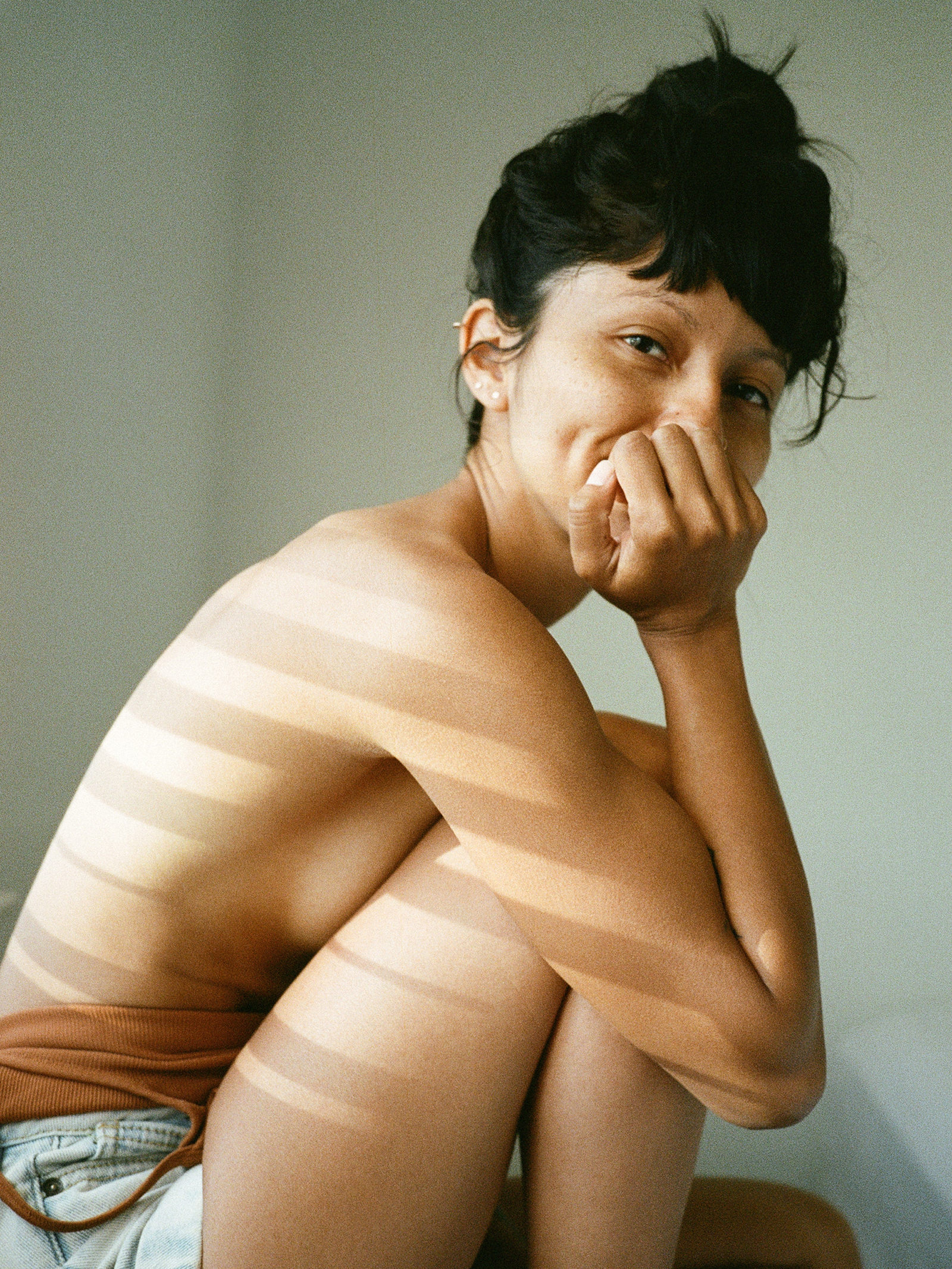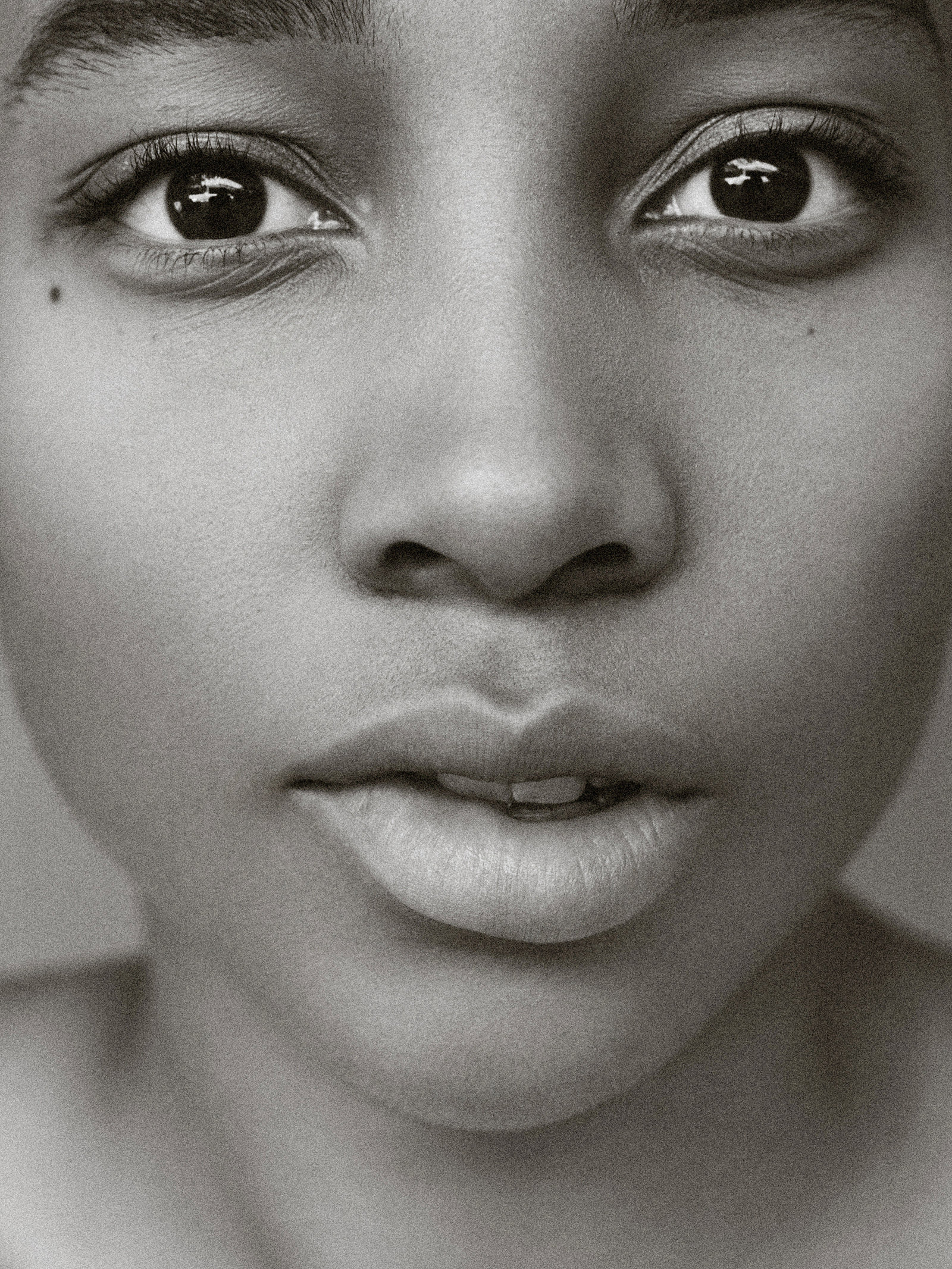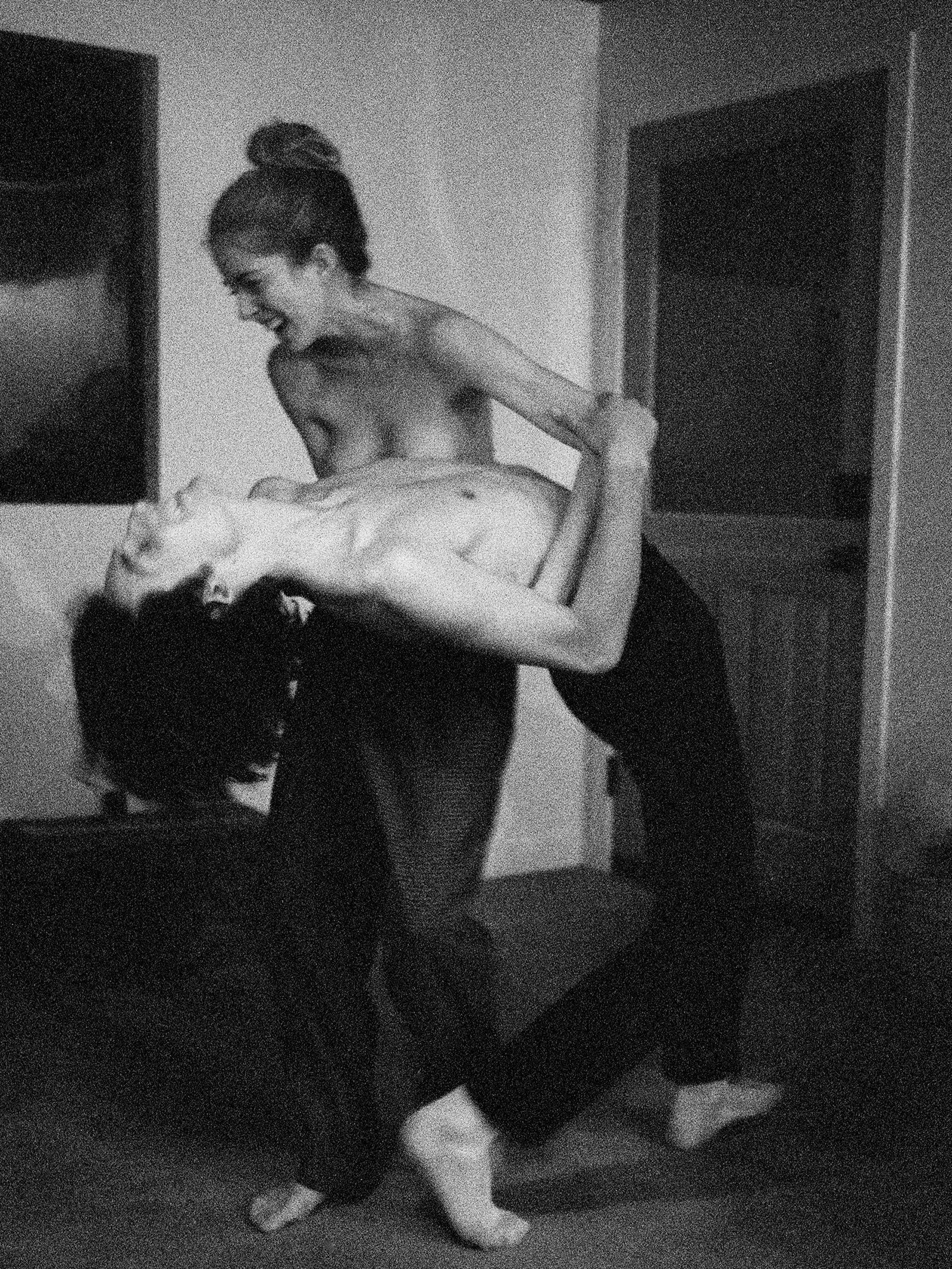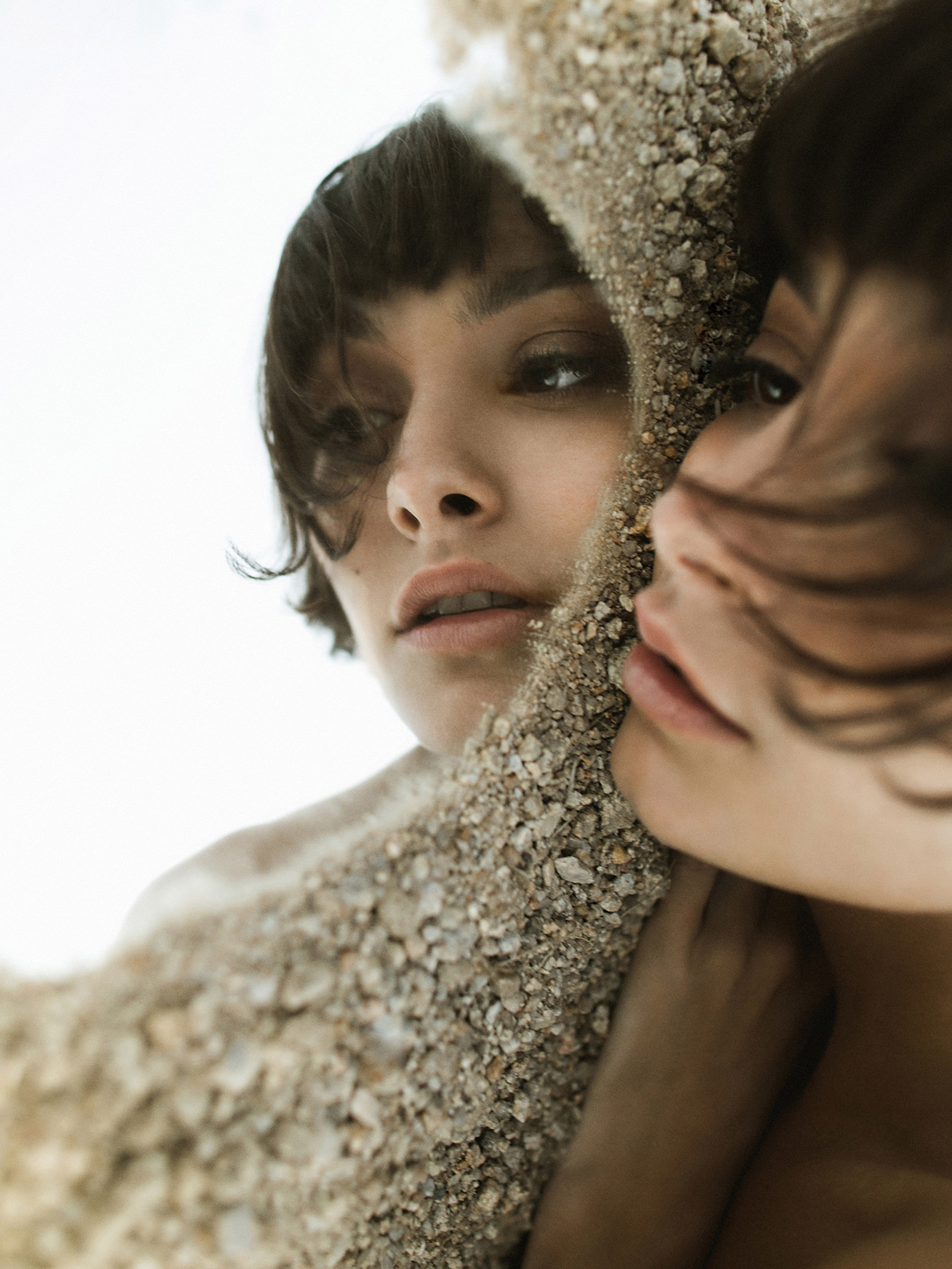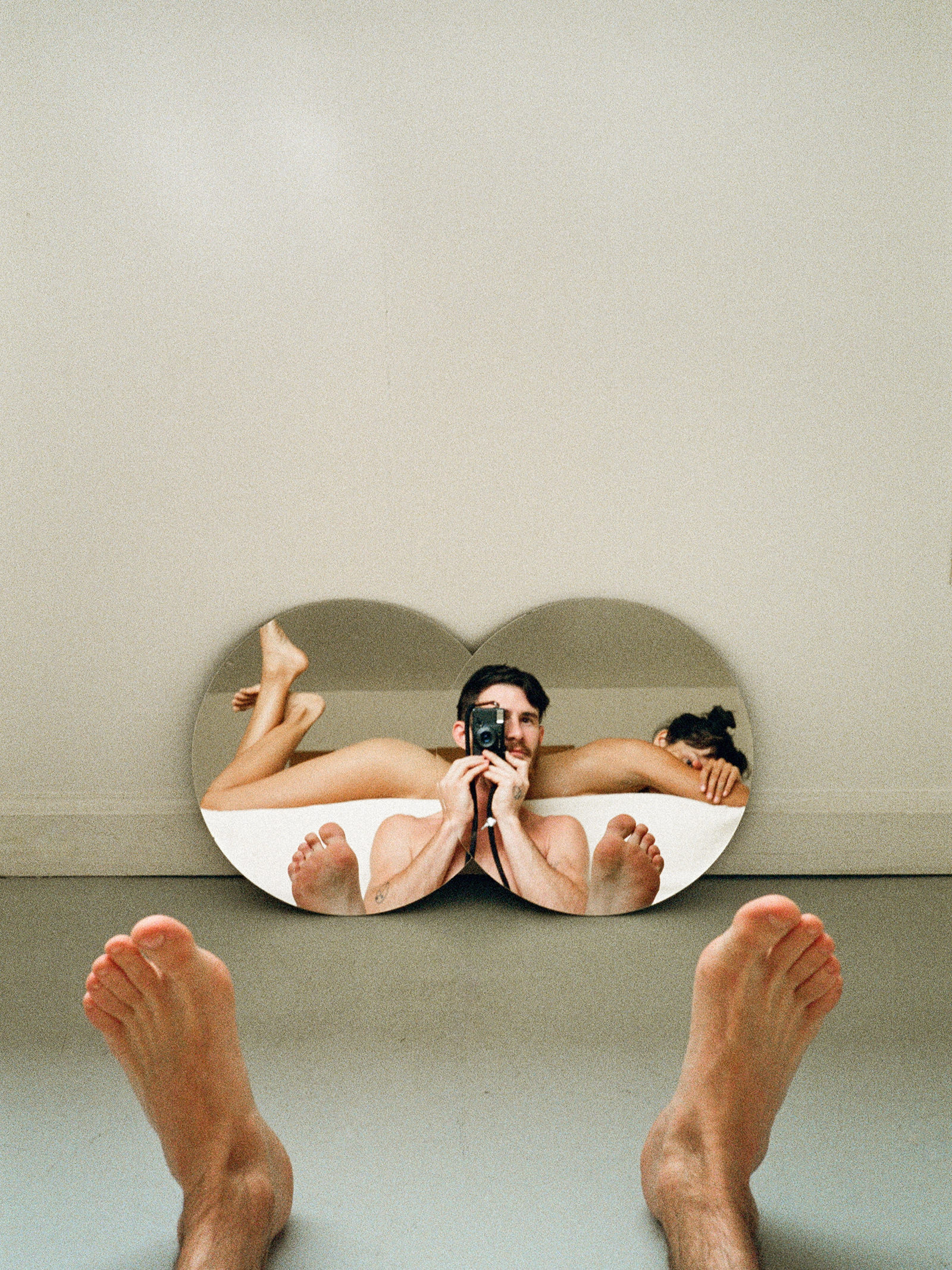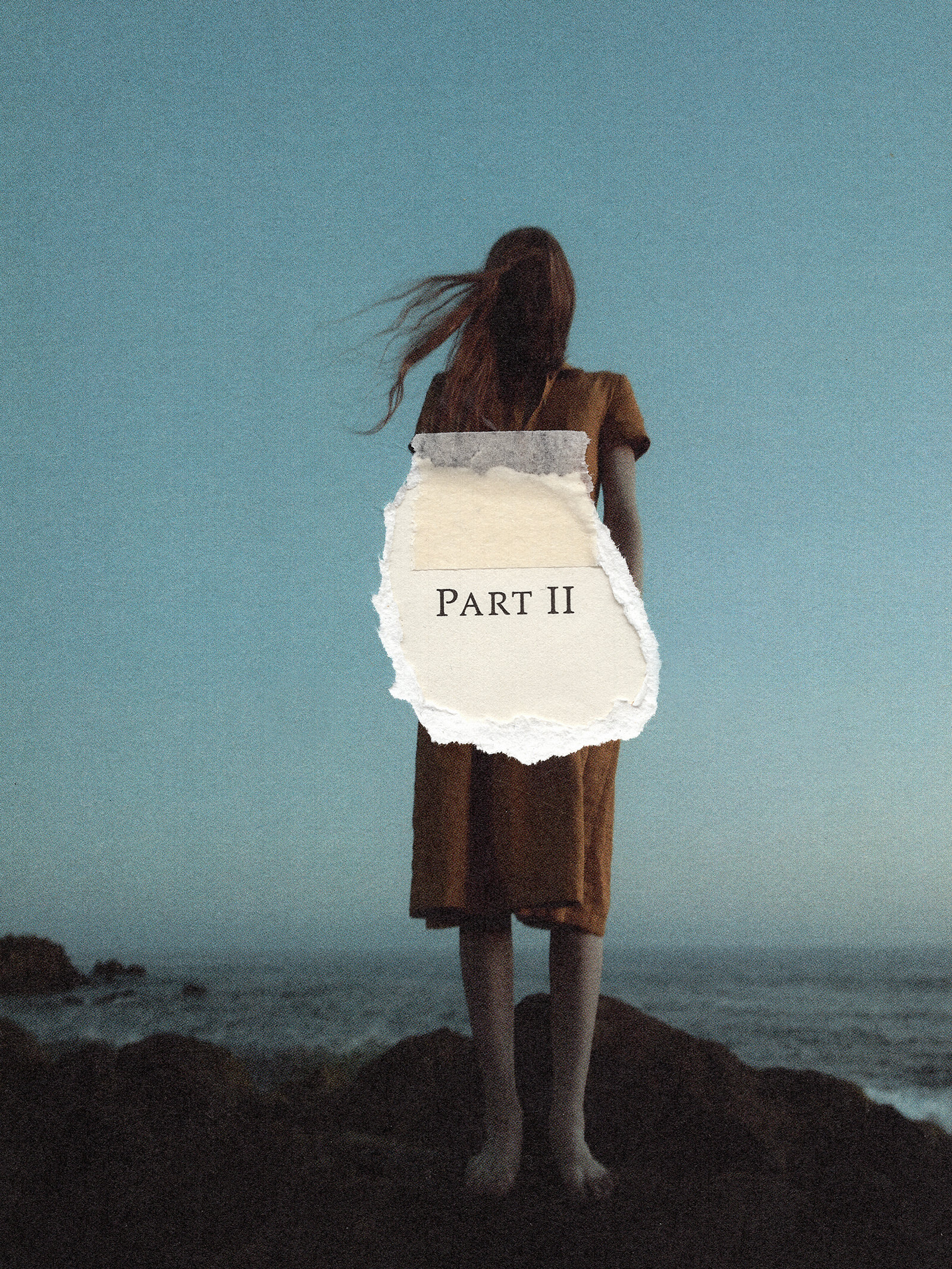
Embracing the Beauty of Awkwardness with Ben Sasso
Based out of Los Angeles, photographer and educator Ben Sasso lives in a van, creating art and teaching courses to help others improve their craft. His work blends creamy natural light with vintage-inspired elements of blur and grain to create a consistent style that speaks to his perspective as an artist – someone who sees the value in creating in a way that is true to his own unique “awkwardness.”
With more than 110k followers on Instagram, it’s clear Ben’s awkwardness is something others can identify with. His award-winning work has earned him the titles of “Educator to Watch” and “Rising Star of Wedding Photography” by Rangefinder Magazine, and he’s been featured in a variety of magazines, podcasts, and summits. He’s even the founder of his own photography camp, Heck Yeah!
We caught up with Ben to talk about what motivates his artwork, what his creative process looks like, and what success means to him.
When did you first begin to consider yourself a photographer and artist? How did you get your start?
I latched onto the identity of “creative” at a pretty young age. I think I was attracted to the idea of being in that outsider fringe group of weird people because I saw society as some sort of illusion that people get tricked into. Turns out, I tricked myself into another society.
I started shooting when my yearbook teacher gave me an old film camera as a graduation present. Up until then, I was thinking interior design or special ed teacher. However, the breeze or circumstance had other plans.
What artists or photographers do you most admire? And how has their work influenced your own?
I love seeing artists who follow their own ideas instead of riding on the current trends. Surprise is one of the most potent perfumes of art. Seeing a photograph or painting that makes you say, “Oh, shit!” is one of the biggest joys I get out of art – and that only happens when artists are willing to, and brave enough to put out their own unique take. This happens everywhere: music, lyrics, movies, poetry, etc. Being unique is as easy as existing. Creating work from that place takes bravery and freedom from the desire to achieve anything other than temporary creative achievement.
I think those artists have influenced me by illustrating the difference between creating for the enjoyment of creating, and creating for achievement. Seeing such stark differences in those two paths made it pretty clear which path I want to walk, and which path is the most conducive to creative fulfillment. It took me about 10 years to work through my desire for achievement and my instinctive motion toward “success.”
My work in the past few years has begun to fall apart. All of the trends I caked onto my ideas have started to crumble away, and what’s left is the work I’d create whether sharing it or not. Sure, it’s probably impossible to create without wondering how it will be received (our evolutionary need for acceptance to the group guarantees this), but there is a difference between allowing that thought to alter what you do naturally and letting it waft on through the open sky of your mind.
Your photography has a real feel of candid intimacy, like you’ve just caught your subjects in a private moment. How do you achieve this? Why is this something you aim for?
Thanks! I do love the feel of reality, sometimes with a little something odd worked in. The quickest way to invite someone to walk down that path is to step into it yourself. Be you – all of you. The parts that might embarrass you included. Finding comfort with your own “awkwardness” allows others to find comfort in theirs. It shows them that you don’t judge awkwardness, you embrace it and welcome it. You’re kind to it.
This open environment allows people to be themselves and this is where the candid vibe comes from. It’s a simple premise: If people feel comfortable enough to be themselves, they will be. If they don’t, they won’t.
The way you use light is really effective – it’s creamy and soft and seems to be coming from the perfect angle. How do you work with natural light to achieve these kinds of results? Do you use artificial lighting, as well?
Quick answer, learn light. It’s all we’re ever taking pictures of.
Longer answer, I have a free lighting class that covers everything I know about light (which isn’t a ton, but it’s carried me here).
You have a nice mix of images with warm, soft colors and monochromatic black and whites (which also often have a warm, sepia-ish tone). What makes you decide to process a certain image without color?
Nothing more than instinct or resignation. I try not to overthink these things too much because the thinking mind often comes with the thoughts of others. I think it can be argued that our thoughts aren’t much more than the ideas of everyone else and our life experience that got trapped in our heads. The more I latch onto those thoughts when making artistic decisions, the farther away I’m getting from the work I would create on my own.
Sometimes, I load the B&W film because, dammit, I just want to. And other times I convert things into black and white because, dammit… it just doesn’t work in color.
There’s a vintage feel to your work – a lot of grain, blur, light leaks. Why add these ‘imperfections’ to your images?
The look of grain, blur, and light is just beautiful to me. That’s why it’s in my work. Most of the time, this is just a product of the mediums I use (high ISO film, Cinestill, etc.), and sometimes it’s added in post.
Do you have any particular habits that are a part of how you begin your creative process?
Yep!
1. Live life
2. Work my mind to the bone clawing at life to find some sort of idea
3. Fail to
4. Have an idea pop into my head in between peeing and stepping into the shower
5. Email the idea to myself while I’m standing naked in the bathroom
6. Later, write the idea in my journal and build it out
I actually have a video about my process. It’s pretty stupid.
What do you do when you hit a wall during your creative process?
Stop, look at the wall with kindness, turn.
Usually toward life. Toward not giving a shit about art for a bit. Then, all of a sudden, I look back and the wall is crumbled up on the ground.
What do you think makes for a successful photograph?
The creative fulfillment of the photographer. If they enjoyed creating it, success!
Sure, there are a million reasons artists create (money, acceptance, fulfillment), and there are a million definitions of success to match. Mine just happens to be fulfillment, currently.
What kind of post-processing do you do? And how do you know when your image is ‘done’?
I edit in Lightroom, and retouch (less and less as the years go on, now barely) in Photoshop. My editing when shooting digital is a little more involved (exposure, white balance, contrast, tone curve, HSL, split toning, grain, retouching), and my editing when shooting film is much more minimal (mostly exposure, white balance, and contrast, sometimes more).
Done is a feeling, not a formula. When my gut is excited to edit the next image, I know the current one is done. That’s how the mind works. Unless there is a HUGE new problem introduced, its job is to solve a problem, and then move to the next one. Time after time. Problem after imagined problem. Forever. Existence sure is a hoot.
What’s the one quote that always fires you up, or a book you would recommend any creative person read?
“It is.” I wouldn’t say it fires me up as much as puts my fire out in the kindest way.
The mind is a labeler. A judger. An organizer.
It will take whatever you are currently experiencing (stomach ache, confrontation, failure, etc.), and label it as good or bad. Helpful or harmful. Kind or mean. Silly or scary. When things land on the comfortable end of that spectrum, we latch on. When things land on the scary end, we push away.
Instead, we can notice that things aren’t inherently good or bad at all. They are just things, existing as they were before the human mind started labeling them as good or evil. Things become so much more peaceful when we’re able to see past the illusion of our evolutionary instinct to label everything as friend or threat. At that, clinging to the good and fighting against the bad can get tiring.
As for recommended reading, I love reading things that expand my perspective on my situation. I’m Ben Sasso! Oh, wait, I’m actually a human! Oh, wait, I’m actually a human in the line of 200 thousand years of humans. Oh, wait, I’m just a collection of atoms that are forming this shape for about 80 years. Oh, wait, how are those atoms thinking this? All of these thoughts widen my understanding of reality, and help me see my life in the larger perspective. An 80-year lifespan seems like a long time until you realize that life has existed for about 3.5 billion years. And that the pebble of Earth has been floating around the vastness of space for 4.5 billion years.
Perspective.
A few authors that I enjoy:
Sean Carrol
Richard Dawkins
Pema Chodron
Lao Tzu
Sam Harris
Robert Wright
David Eagleman
Bob Dylan
Conor Oberst
Aaron Wiess
What are you focusing on right now, in your work and photography?
I think, like most, I put myself in a small box for a while. The photographer box. I forget that I live in bigger boxes, too. Artist. Creative. Human.
Right now, I’m exploring some of the fun things in those larger boxes. Actually working on music, currently, and living.
How do you hope your work impacts viewers? What do you aim to express through your photography?
I don’t consider this as much as I used to. Now I’m just trying to enjoy creating, and being a kind person. This has helped me create some of my favorite work, and not to latch onto the success of it.
In general, I’d say I hope my impact in the community is a good one. I hope that, in whatever small way, I add to the enjoyment in people’s lives.
Ben’s lifestyle photography reveals the simple beauty of natural light and candid poses, and can be seen on his Instagram or on his website. His award-winning work has been published in magazines around the world.

